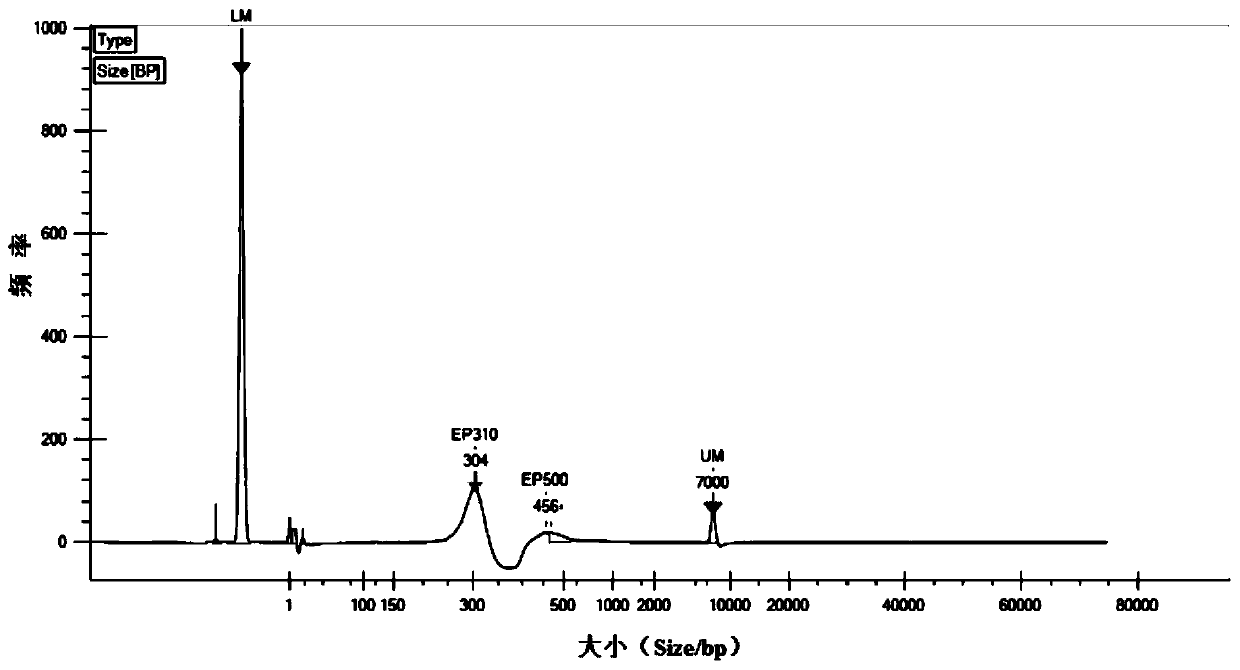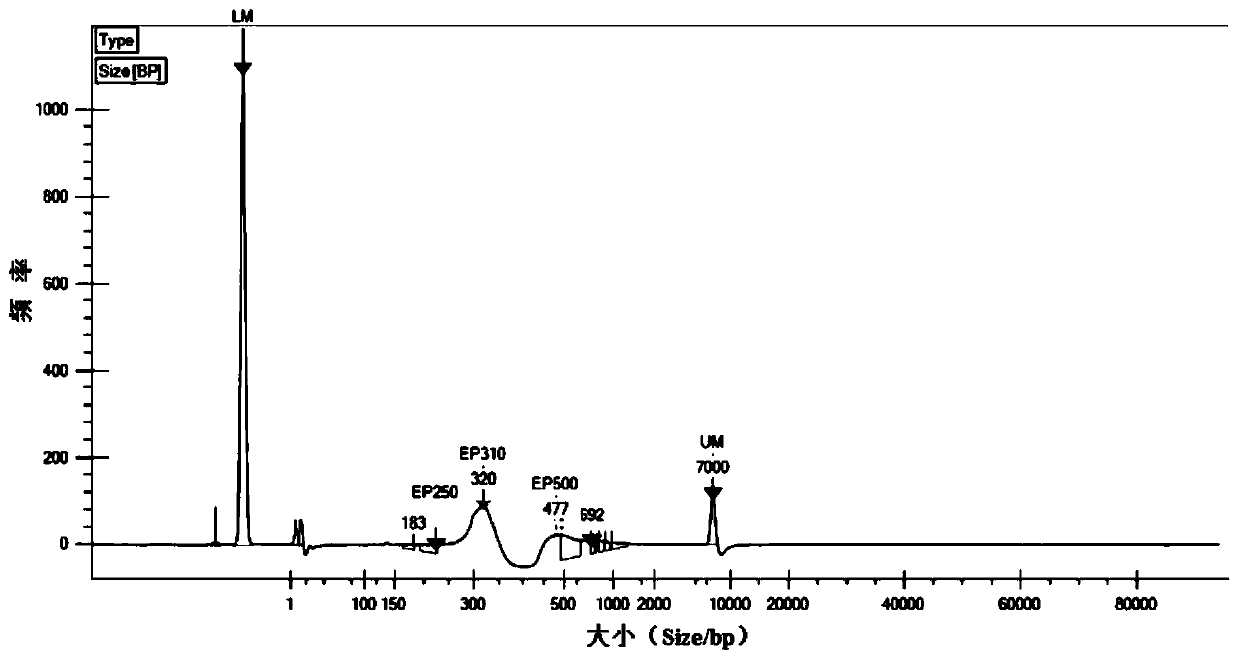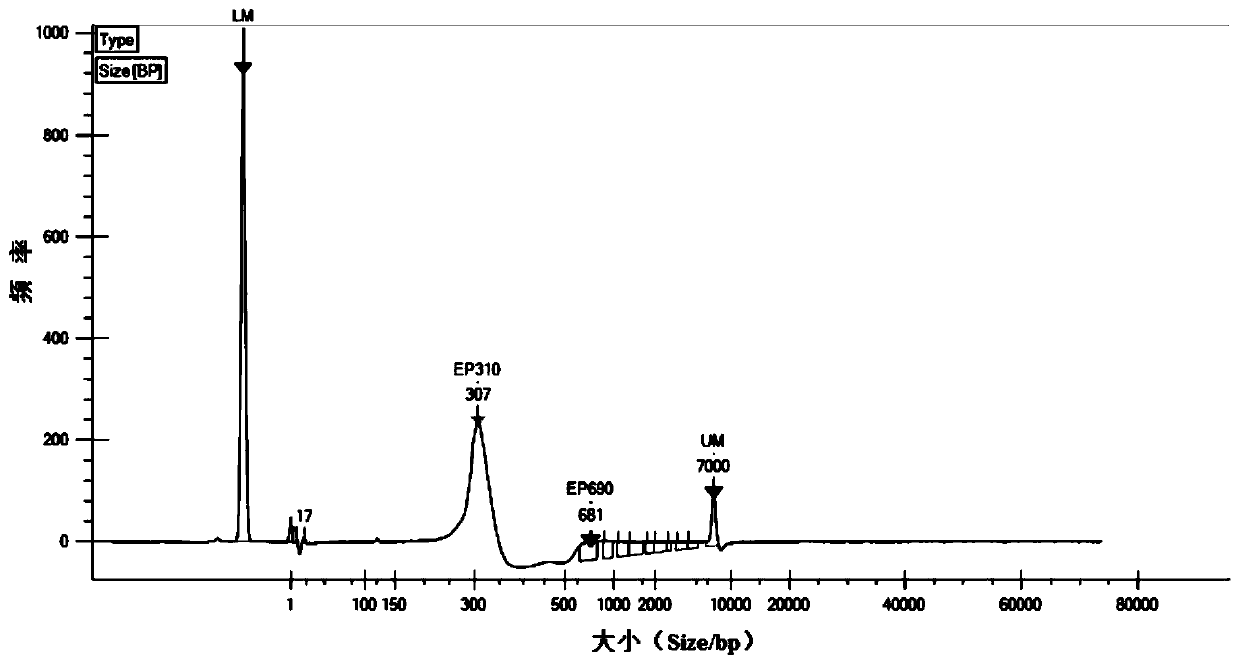Plasma DNA library and construction method thereof
A DNA library and construction method technology, applied in chemical libraries, biochemical equipment and methods, combinatorial chemistry, etc., can solve the problems of long time and low efficiency of plasma DNA library construction, shorten the time for library construction, and improve the efficiency of library construction Effect
- Summary
- Abstract
- Description
- Claims
- Application Information
AI Technical Summary
Problems solved by technology
Method used
Image
Examples
Embodiment 1
[0047] The preparation method of embodiment 1 plasma dna library
[0048] 1. Plasma separation and preparation
[0049] ①The first plasma separation
[0050] After placing the peripheral blood of pregnant women in Streck blood collection tubes, centrifuge at 1600g, 4°C for 10min;
[0051] Check the properties of the upper plasma, which is transparent and yellowish, without hemolysis and other abnormal phenomena, which is qualified.
[0052] ②Pipe the upper layer of plasma into a new centrifuge tube, then centrifuge at 16000g at 4°C for 10 minutes, and take the upper layer of plasma for use.
[0053] 2. Plasma processing
[0054] Add Tween 20 reagent, mix thoroughly with the plasma and centrifuge briefly, and centrifuge the plasma to the bottom of the tube.
[0055] The plasma processing system is shown in Table 1:
[0056] Table 1:
[0057]
[0058] Pretreatment system: Tween 20 is used to treat plasma, and the final volume concentration of Tween 20 ranges from 0.5% t...
Embodiment 2
[0087] The selection of embodiment 2 emulsifiers
[0088] Using the same steps as in Example 1, the same initial amount of plasma (both 45 μL), using different amounts of emulsifiers to emulsify the plasma, using the same rTaq enzyme (Takara R500Z) for end repair and adding "A" operation , when the subsequent steps are the same, the influence of emulsifier dosage gradient on the constructed library storage capacity is detected, see Table 7 for details.
[0089] Table 7:
[0090]
[0091] In addition, emulsifying reagents such as Triton-100 or NP40 were also tested. The test results are similar to Tween 20, which can emulsify and increase fluidity, and improve the convenience of operation and library yield to a certain extent.
Embodiment 3
[0092] Example 3 Screening of Taq enzymes
[0093] Use the same initial amount of plasma (45 μL), use the same emulsifier (Tween 20) 3.00 μL to emulsify the plasma, use different enzymes to repair the end and add "A", and the subsequent steps are the same , to detect the effect of different end repair and "A" added enzymes on the capacity of the constructed library, see Table 8 for details.
[0094] Table 8:
[0095]
[0096] According to the results in Table 7 and Table 8, Tween 20 was selected as the emulsifier, and rTaq was used as the end repair plus "A" enzyme for subsequent detection of different sequencing platforms. Among them, the library test quality inspection results of the illumina sequencing platform are shown in Table 9.
PUM
 Login to View More
Login to View More Abstract
Description
Claims
Application Information
 Login to View More
Login to View More - R&D
- Intellectual Property
- Life Sciences
- Materials
- Tech Scout
- Unparalleled Data Quality
- Higher Quality Content
- 60% Fewer Hallucinations
Browse by: Latest US Patents, China's latest patents, Technical Efficacy Thesaurus, Application Domain, Technology Topic, Popular Technical Reports.
© 2025 PatSnap. All rights reserved.Legal|Privacy policy|Modern Slavery Act Transparency Statement|Sitemap|About US| Contact US: help@patsnap.com



